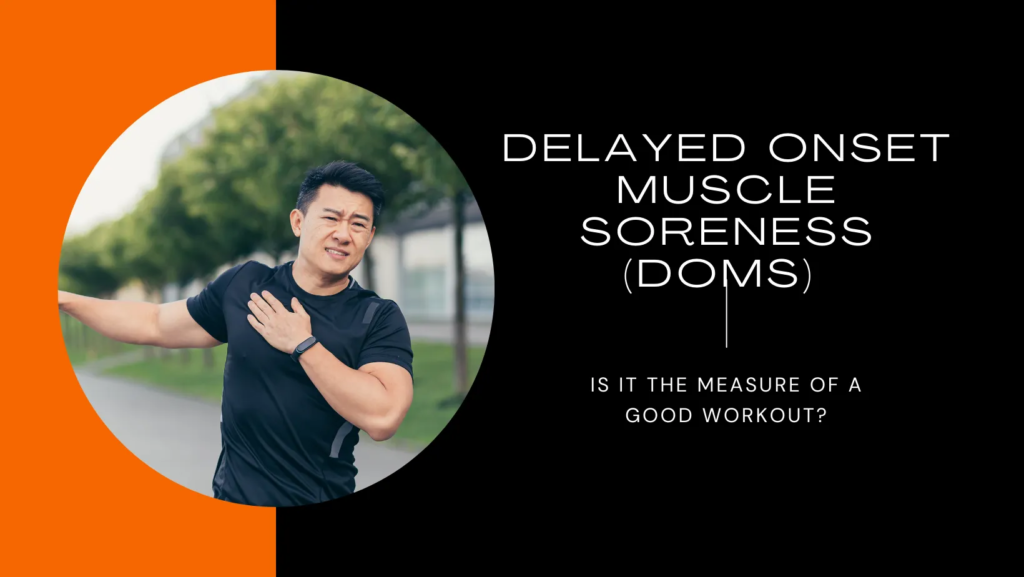I have spoken to a number of people in the past, including PTs who believe that if they don’t experience D.O.M.S. after a training session, they haven’t worked hard enough. They also actively encourage and push either their clients or friends in the same manner.
There is undeniably a psychological element at play but past wanting to feel like you’re the hardest worker in the room will it improve your gains? Let’s explore what’s going on.
What is D.O.M.S?
Let’s first begin by understanding when you may experience D.O.M.S (Delayed Onset Muscle Soreness) and what it is.
After a bought of heavy training or indeed a new training stimulus, stiffness and tenderness within the muscles used can be experienced, which can continue for up to 4 days in some trainees before subsiding. The exact mechanism behind the impaired muscle function is still unclear, but several theories exist, including excitation-contraction coupling impairment, damage to various muscle fibres, metabolic impairments, and fatigue.
That’s D.O.M.S briefly covered, but we must also understand how training supports building muscle.
When you are in the gym or track, the work you are doing right at that time isn’t what is making you stronger. You are, in fact, becoming weaker due to fatigue and micro-trauma to your working muscles. However, this is an essential part of growth because it’s this fatigue and microtrauma causing muscle protein break-down (M.P.B)and in turn triggering Muscle protein synthesis(M.P.S) and adaptation (Selye’s Theory of Adaptation G.A.S – Click to learn more on that here). With adequate rest, sleep and nutrition, your body can remodel/rebuild the damaged muscle fibres as needed, bigger and stronger. The time frame for this recovery/adaptation period depends on 2 things; the muscle being trained and the level of damage. Muscle Protein Synthesis can remain elevated for up to 3 days.
The concerns I have with chasing D.O.M.S as a method to determine a good workout are;
Firstly, most people can experience D.O.M.S for up to 3-4 days, and the large majority of regular gym-goers will not train that muscle group until the D.O.M.S has passed, meaning 5-6 days could pass before that muscle gets trained again. At best that’s 2 days after M.P.S. has fallen. Over the year, that will mean many lost opportunities to train that muscle group, leaving gains on the table.
My second cause for concern is that if you’re aggressively damaging the muscle every workout to trigger D.O.M.S. that 24-48 hour window in which the muscle has time to heal, may mean that it isn’t able to adapt in time. Either before the window closes or your next training session whereby you break it down again further, leaving you stuck in a vicious cycle, actually getting weaker over time and not stronger.
What would I suggest?
We definitely know that you do not need to be experiencing D.O.M.S to trigger adaptation and from what I have read and understood to date, on assuming you are not an enhanced lifter (using Performance Enhancing Drugs P.E.D’s), By training that muscle group with the same amount of sets over 2 days is far better than smashing them once a week (Schoenfeld et al). The key is finding that sweet spot maximising how much muscle damage occurs without causing a prolonged recovery period due to D.O.M.S, so you can be back training that muscle group again within 3-4 days, keeping gains coming! With that said, unless you’re wired a bit differently, being sore every day of your training life IS NOT fun. So, if your goal is to be as efficient as possible and still manage to be a useful human being during the rest of your waking life keeping the frequency up and the soreness down and it’s a win all around.

